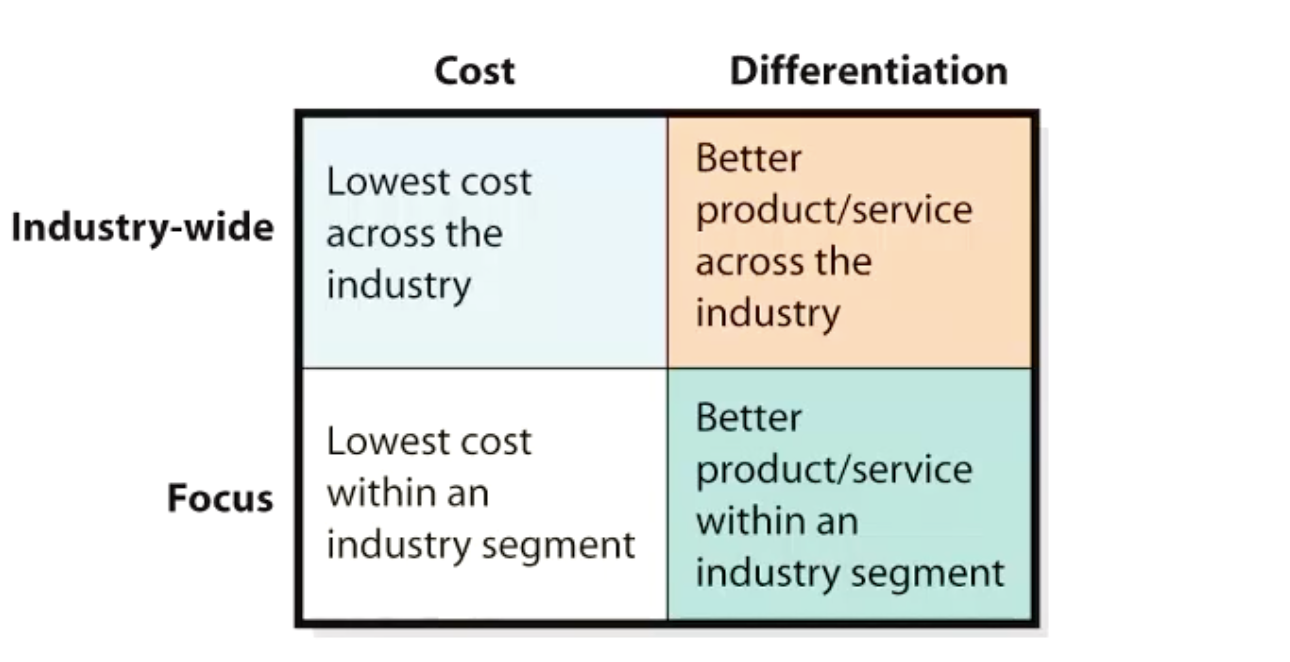The organisation device a competitive strategy to position themselves advantageously within the industry. Porter’s Four Competitive Strategies is a framework for this decision making process. These strategies help businesses choose how they will compete in the market, either by cost or differentiation, and whether they will target a board or narrow market.

Competitive advantage
Cost leadership strategy
Cost leadership is to become the lowest-cost producer in the industry. This does not necessarily mean offering the lowest prices, but being the most efficient in terms of production and operational costs. For example, Walmart is a classic example of cost leadership. It offers a wide variety of goods at low prices by maintaining cost-efficient operations and using its vast scale to negotiate favourable terms with suppliers.
How to achieve cost leadership
Companies focus on reducing costs through economies of scale, using efficient technology, optimising supply chains, and minimising waste.
Differentiation strategy
Differentiation strategy focus on making products or services unique in ways that are valued by customers. By offering unique products or services, competitors cannot easily replicate, companies can command higher prices and build brand loyalty.
Example: Apple uses differentiation with its focus on design, innovation, and seamless ecosystem on devices and services. Its products are distinct from competitors. Customers are willing to pay more for the brand’s perceived quality and innovation.
How to achieve differentiation
Companies using differentiation invest in innovation, branding, product quality, or customer service to set their offering apart from competitors.
Competitive scope
Broad strategy
A broad strategy targets many or all segments in the industry or market. Typically offering products or services that have wide appeal. They may pursue either cost leadership or differentiation strategies within this broad market.
Example: Amazon operates with a broad scope by offering an extensive range of products and services that appeal to virtually all types of consumers across the world. Its offerings cover many categories, from books to electronics to cloud services.
Narrow strategy
A narrow strategy targets a specific segment in the industry or market. This could be a certain type of customer, a particular geographic area, or a unique product offering. Companies with a narrow scope customise their products or services to meet the unique needs of a small, specialised market. They can pursue either cost leadership (lowest-cost provider for that niche) or differentiation (offering a unique product for that niche).
Example: Tesla originally followed a narrow scope by focusing on the high-end, environmentally conscious customer segment that wanted luxury electric vehicles. Over time, it has broadened its scope, but initially, it targeted a niche market with highly specialised products.
Back to parent page: Strategy and Competitive Advantage
Business Porters_Four_Competitive_Strategies Competitive_Strategy